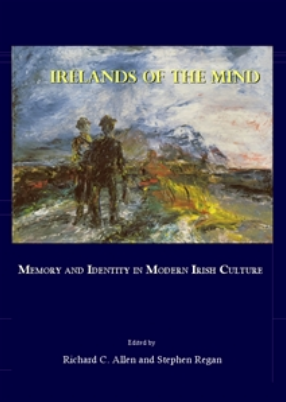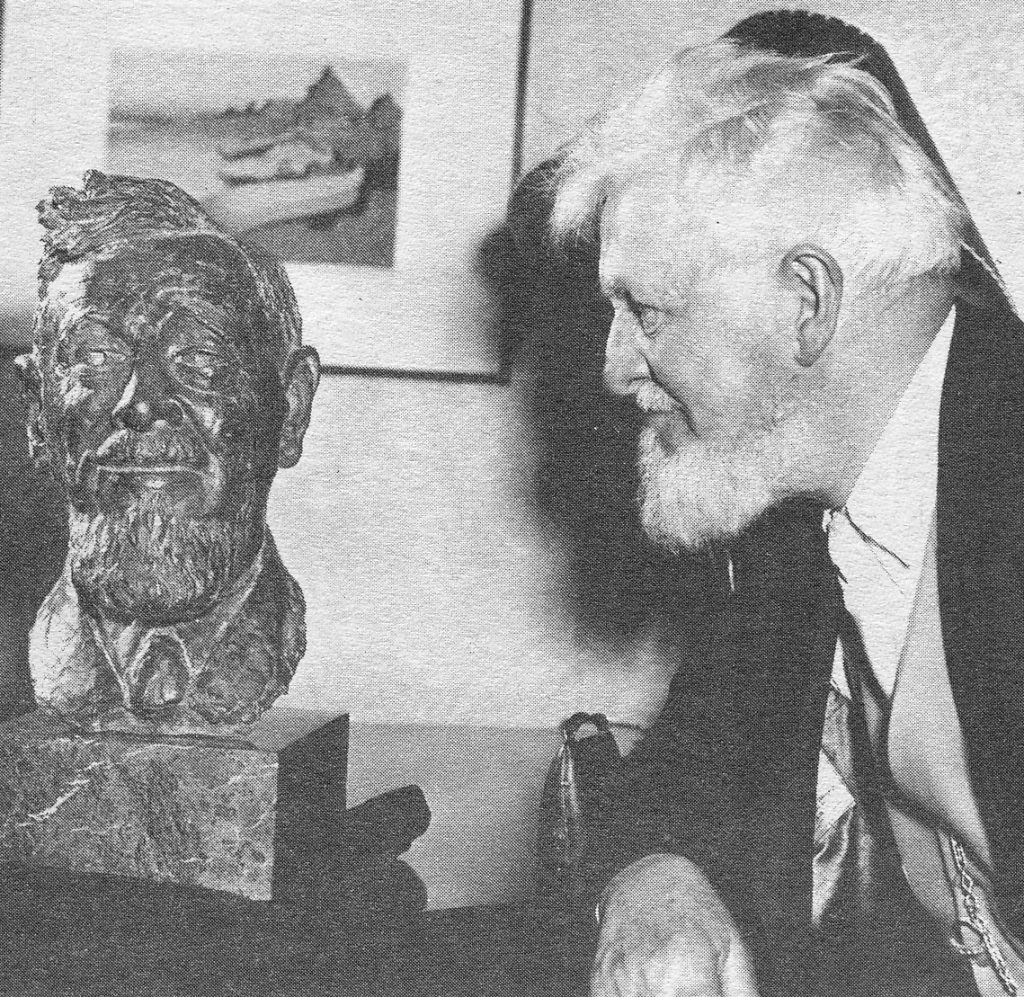
TROUBLE IN THE GLEN (1954)
Herbert Wilcox directed comedy about the conflicts unwittingly sparked in the sleepy Scottish village of Glen Eachen by two foreign newcomers. One is an American airman, Major Lance Lansing (Forrest Tucker), who is searching for the daughter of his wartime marriage. The other, Sandy Menzies (Orson Welles) has come to claim his inheritance and install himself as a laird of the glen.
He quickly alienates the locals by shutting the gates and closing down the road that runs through his estate. Violence threatens to erupt when Menzies evicts some poaching tinkers from his land, and upsets a crippled girl, Alguin (Margaret McCourt). The displaced tinker, Parlan (Victor McLaglen), and son Malcolm (John McCallum) round up a gang of thugs to lay siege on Menzies castle, burning an effigy and stealing his prize cow. Menzies escalates the war by importing a gang of Glaswegian thugs. Hoping to make peace between the laird and the locals is Major Lansing, who falls in love with Marissa (Margaret Lockwood) Menzies daughter.
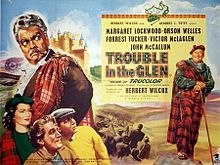
Maurice Walsh was asked to assist in the making of the film on location in Scotland but refused, being wholly unimpressed with the less than salutary film rights negotiations he had previously been subjected to in rights acquisition for Trouble In The Glen, and partly in response to the remuneration he received from the box office success of The Quiet Man. He did not like the film either. Walsh’s 1950 novel of the same name, on the other hand, is a masterpiece.
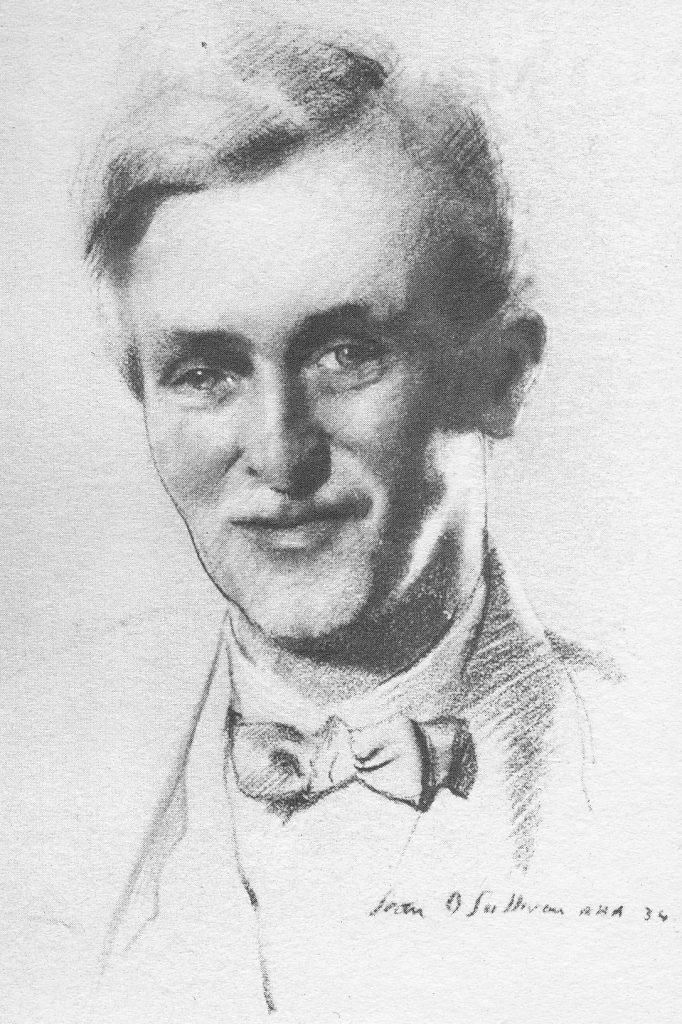
THE QUIET MAN (1952)
Director John Ford acquired the film rights to Maurice Walsh’s 1933 Saturday Evening Post story in February 1936.
The film received Academy Awards for Best Cinematography and Best Direction, and was nominated for awards in the following categories: Best Picture, Best Screenplay, Best Sound Recording, Best Art Direction and Best Supporting actor (Victor McLaglen). Screenwriter Nugent won the Screen Writers Guild award for Best Written Comedy of 1952.
The film plot begins as Sean Thornton, an Irish-born American boxer, returns to Ireland to reclaim his family’s farm in Innisfree. Sean’s attempts to reclaim his home and birthright are not without incident. He clashes with an arrogant, aggressive landowner, Squire “Red” Will Danaher. Maureen O’Hara portrays Mary Kate Danaher, the Squire’s younger sister, who falls in love with Sean.
Both Sean and the Squire long to purchase “White O’Mornin” a place where the Thorntons lived for many generations. A local resident, the Widow Tillane, owns the Thornton farm at the time of Sean’s return. When the Widow Tillane learns that the Squire has gossiped about their potential nuptials in the local pub, she sells the Thornton cottage to Sean.
Both Sean and the Squire long to purchase “White O’Mornin” a place where the Thorntons lived for many generations. A local resident, the Widow Tillane, owns the Thornton farm at the time of Sean’s return. When the Widow Tillane learns that the Squire has gossiped about their potential nuptials in the local pub, she sells the Thornton cottage to Sean.
Sean first encounters Mary Kate cleaning the Thornton cottage. When their subsequent courtship and engagement come to light, the Squire refuses to remit Mary Kate’s dowry or his blessing which is necessary to validate her marriage to Sean. Sean and a local Catholic priest trick the Squire into granting his blessing and Mary Kate’s dowry, and Sean and Mary Kate marry before the Squire perceives the subterfuge. Sean and Mary Kate eventually consummate their marriage, and Sean and the Squire make peace after a rousing fistfight.
In 2002, The Quiet Man was rated number seventy-six in the AFI’s list of one hundred greatest film love stories.
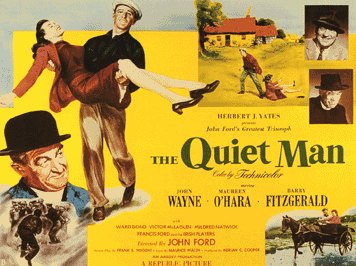
Although the film is markedly different from Walsh’s original short-story that makes up the penultimate episode in the novel, Green Rushes, it is a cinematic masterpiece.
JOHN FORD: DREAMING THE QUIET MAN (2010)
For those with a real interest in the lasting popularity of Ford’s paean to the Ireland he thought disappearing and for the qualities of the Irish people and Irish language which was a personal, life-long, obsession, we strongly recommend the DVD, John Ford: Dreaming The Quiet Man. The input from master filmmakers Martin Scorsese and Peter Bogdanovich themselves are worth the price of watching.
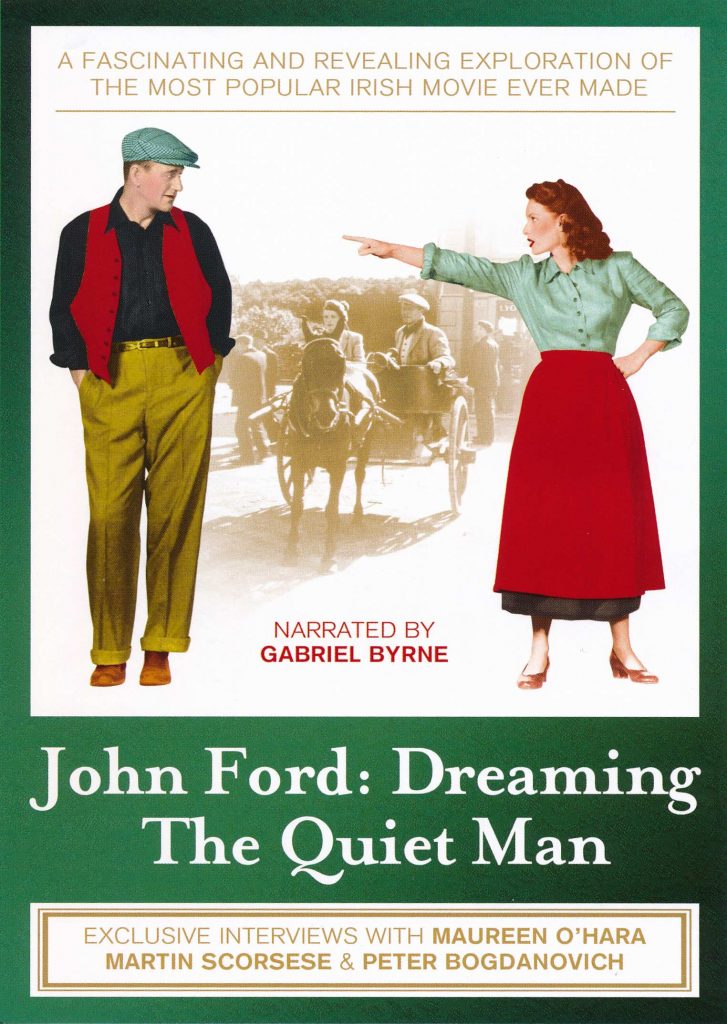
Also, there is a very informative chapter on the film as well in this excellent book on memory and identity in Irish culture by Richard C. Allen and Stephen Reagan. The book seeks to understand the various ways in which Ireland has been thought about, not only in fiction, poetry and drama, but in travel writing and tourist brochures, nineteenth-century newspapers, radio talk shows and film adaptations of fictional works.
